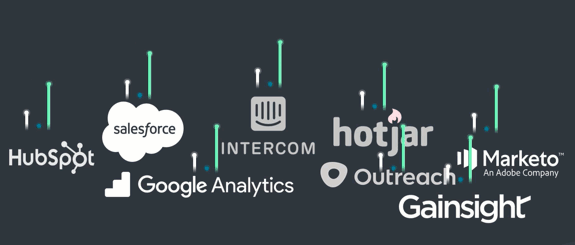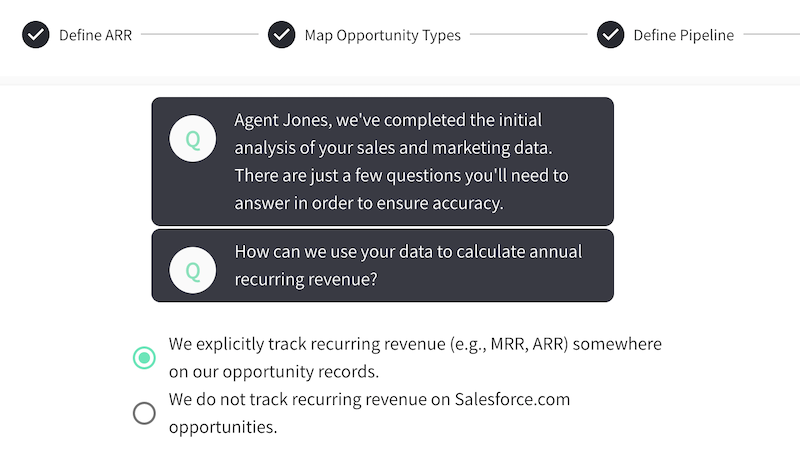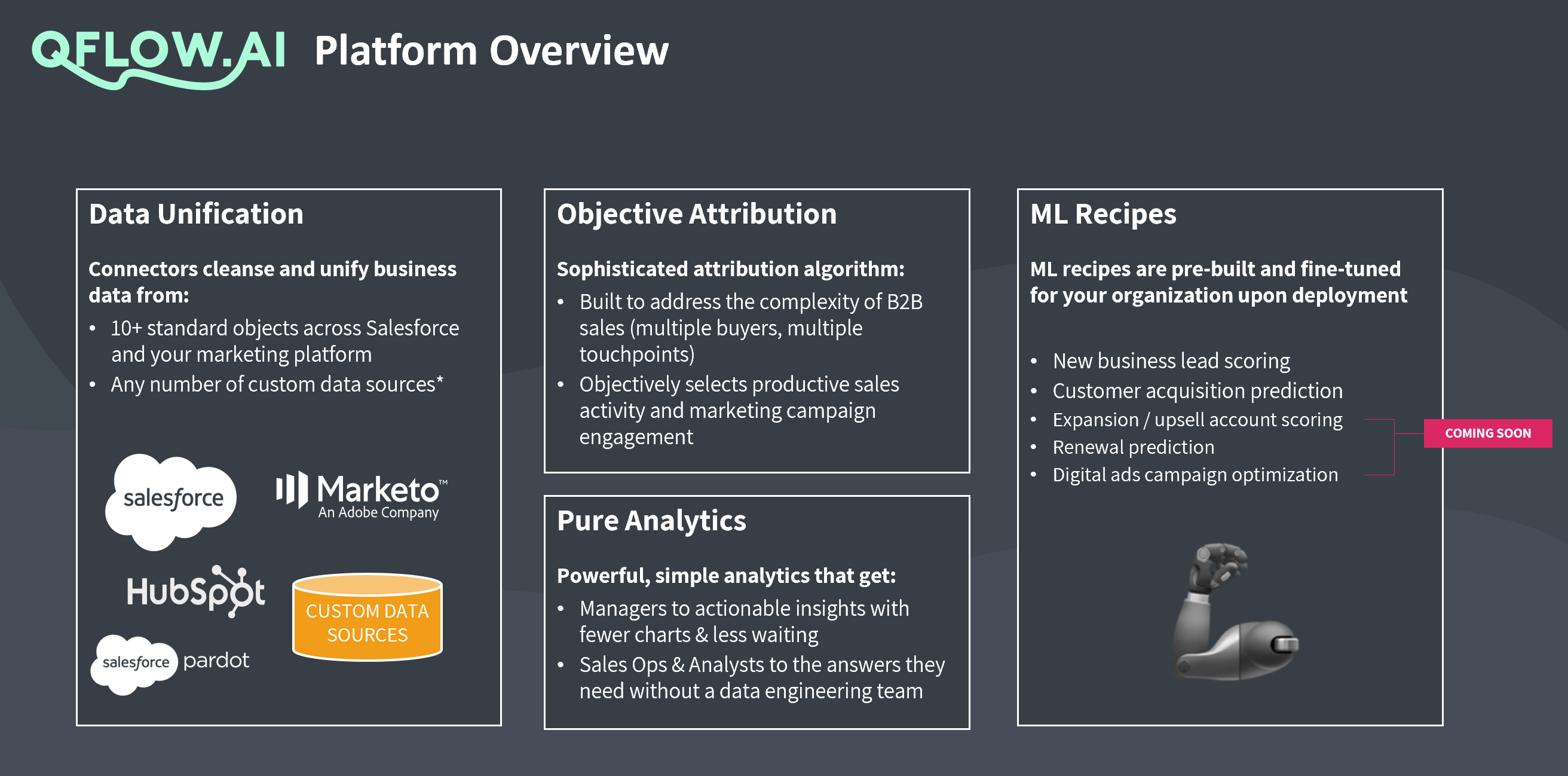What is QFlow and why?
With the formation of QFlow.ai, I wanted to share a bit about what QFlow is and does, but also try to answer the question: why build QFlow?
Let’s begin with the problem. Both I and my co-founder have spent years in executive positions (CFO, VP Finance, VP Operations, VP Marketing, etc.) at B2B companies. At each company, between sales, marketing, customer success, and finance, we had a lot of tools generating a lot of data. But our organizations were by and large stuck with outdated tools and skills to analyze that data.
Content Launchpad

Deceivingly simple but important questions are notoriously difficult to answer for B2B sales & marketing professionals
Often the simplest of questions that we ask of our data are difficult to answer reliably, accurately, and efficiently. Some examples include:
- What does the customer acquisition journey look like, from marketing, to sales, to customer success?
- What programs, marketing campaigns, and sales tools are yielding the best outcomes? What about relative to cost?
- How much time is it taking for our sales reps to follow up on an inbound lead?
- What happened to the opportunities that made up the $XX million dollars in last month’s sales forecast?
- What types of outbound sales activities are yielding productive vs. unproductive outcomes? Which sales behaviors can we model our playbook around?
- How can we more accurately predict conversions? How can we more accurately forecast renewals?
- Can we fix lead scoring and build trust between sales and marketing?
To properly analyze a B2B business, a data warehouse is required but alone is insufficient
Addressing these questions with intellectual honesty turned out to be a slippery slope. If we got engineering to stand up a data warehouse, we would then require a data engineering resource. If we got a data engineering resource, we would then have to compete for her/his time and attention with more interesting projects.
And, even if we successfully had convinced a capable data engineer to help us maintain the data warehouse, that was just the beginning. We would still need:
- heavy lifting in terms of data transformation, far beyond the capabilities of SQL
- to overcome disagreements / the lack of belief in marketing attribution models
- to get stakeholders onboard across sales, marketing, finance, customer success, etc.
- analysts to partner with data engineers, so we could derive useful information from the data
In short, we had data, but found that too often it resulted in little useful information. Managing our business meant we needed to discard “intuition” and embrace complex data, which in turn meant upgrading our organization’s tool set and skill set. This simply wasn’t feasible most of the time.
So we built QFlow.ai. Because B2B customer-facing teams deserve to use a modern data toolset and its benefits.
What is QFlow?
QFlow.ai is a platform that enables B2B businesses to adopt machine learning, embrace complexity, and quickly answer the questions that matter most. It works not by generating more data, but by using the data that you already have from:
- Salesforce.com (standard objects)
- Your marketing automation platform (Marketo, Hubspot, Pardot, etc.)
- Commonly used marketing platforms (e.g., Google Ads)
- Optionally, any custom data that would be relevant to a machine learning model (more on that later)
We built QFlow.ai specifically to capture the data needed to engineer a time series based dataset, with an abstraction layer that sits on top and addresses idiosyncratic implementations of Salesforce.com.
If you’re familiar with idiosyncratic business systems implementation, you might understandably have raised an eyebrow just now.
With the understanding each company is different, we built an account setup process that addresses differences in and builds on similarities in implementations. It works so well that we’ve patented it.

Rather than spending days, weeks, or months setting up marketing attribution, our beta customers start getting value out of QFlow.ai over the course of an early afternoon.
How does QFlow work?
Let’s address how QFlow.ai works at a high level.
- First, QFlow.ai creates a secure data warehouse for you and you alone — into which it pulls your corporate data
- It uses existing data in your CRM and marketing platform to generate data visualizations and power machine learning recipes (more on that later)
- It then re-assembles standard and, optionally, custom data to a format amenable to machine learning
- And it works out of the box, requiring mere minutes of configuration — not days or months of setup / professional services

What are the capabilities of QFlow?
As of March 2021, QFlow.ai offers the following features:
| Feature | Purpose |
|---|---|
| multi-touch, multi-contact attribution | so marketing and sales can visualize what’s working to generate pipeline, and most importantly, deals |
| campaign measurement views | so that companies can easily compare ARR generated to ongoing spend across sales and marketing programs |
| inbound lead response measurement | so you can measure how long it takes your sales team (or a bot) to respond to inbound leads |
| sales activity analytics | so companies can orient their outbound sales playbook around what works |
| Rep Ramp management | because apples-to-apples comparisons of reps by tenure is critical to efficient onboarding |
| pipeline analytics | because snapshot replay allows sales leaders to explain changes more easily and run tighter sales calls |
| sales win-rate insights | for real-time win-rate reporting and pipeline coverage planning |
| sales forecasting | so sales can deliver highly accurate in-quarter forecasts |
| comments | so teams can collaborate and communicate insights quickly |
| notifications | for our SlackBot to keep teams abreast of changing trends and insights |
| machine learning recipe for lead conversion prediction | P(Convert) helps sales focus on the best leads |
| machine learning recipe for opportunity scoring | P(Close) improves forecast accuracy |
| integrations | with Salesforce.com, Slack, Pardot, Marketo, Hubspot, and Google Ads to get sales & marketing data in one place |
What differentiates QFlow pricing plans?
QFlow.ai offers two function-based plans: one for Marketing and one for Sales. Both plans cost under $10 per active Salesforce license per month. QFlow.ai for Business combines the functionality of our Marketing and Sales plans for a discount.
Machine Learning Recipes can be added to any subscription plan. A Machine Learning Recipe is not “machine learning” in a box. Instead, we’ve developed templates for machine learning models that address common use cases in B2B. These templates are building blocks that, when deployed, are trained and tuned machine learning models. We call these pre-built templates Machine Learning (ML) Recipes.
Our two most popular Machine Learning recipes address lead scoring and opportunity scoring.
A typical Machine Learning recipe relies on standard information gleaned from your Salesforce.com and marketing platform integration, but all recipes in our library can ingest custom data (e.g., product usage data, # API calls, seat utilization).
The inferred results from your ML jobs are available both on the QFlow.ai platform and in your Salesforce.com instance. This way, your employees are able to orient their workday more intelligently without disruption.

What’s on the roadmap for QFlow
We have built a lot in 9 short months, but there remains a lot to build. If you are a capable data scientist, devops engineer, marketing or sales professional, or have a skill set that offers a unique contribution to our journey, we’re interested in talking with you about a fulfilling job.
It’s been humbling to see our earliest customers use QFlow.ai transform the way that they approach generating and retaining B2B revenue in a cost-effective way. During our limited private beta, QFlow.ai generated insights for customers that saved hundreds of thousands of dollars in ineffective spend, increased forecastable pipeline for sales team by 2.4x, and measurably worked to get marketing, sales, and finance teams on the same page.
So, what’s next? More building, more listening. An occasional blog post to try to let you know what we’re up to. And a couple dedicated features for Customer Success teams to complement our ML recipe that predicts and helps mitigate churn.
When you’re ready to join us on this journey, let us know by scheduling a time for a demo. Until then, we’ll be hard at work.
